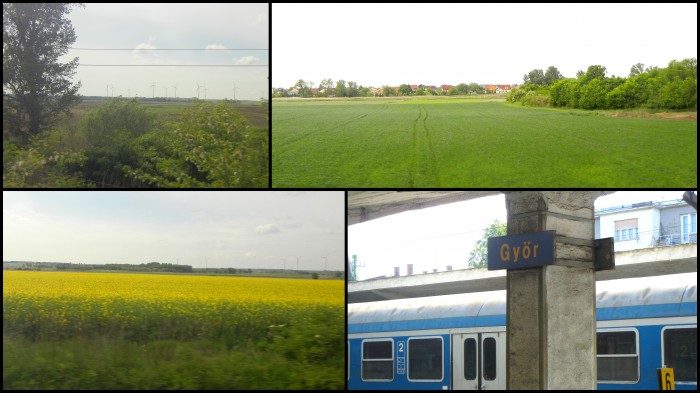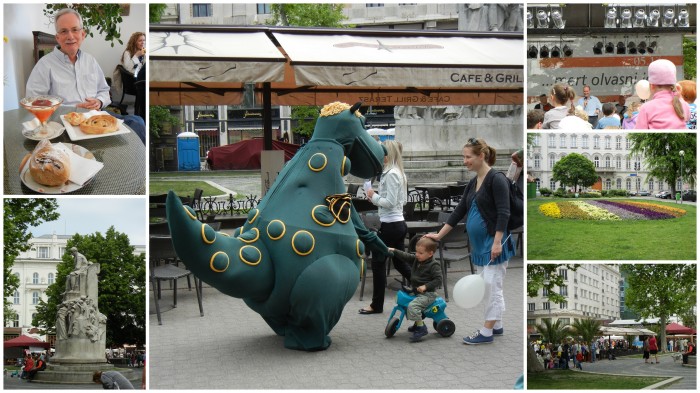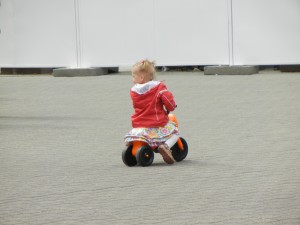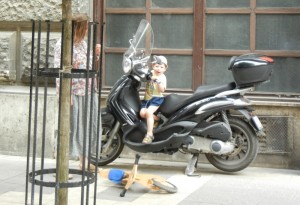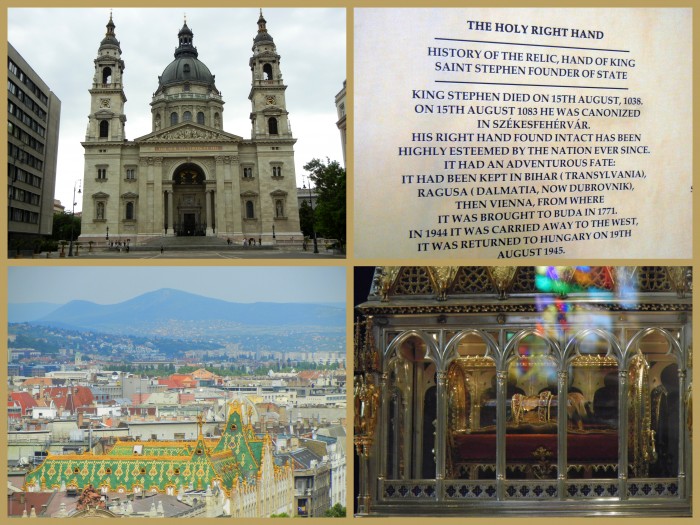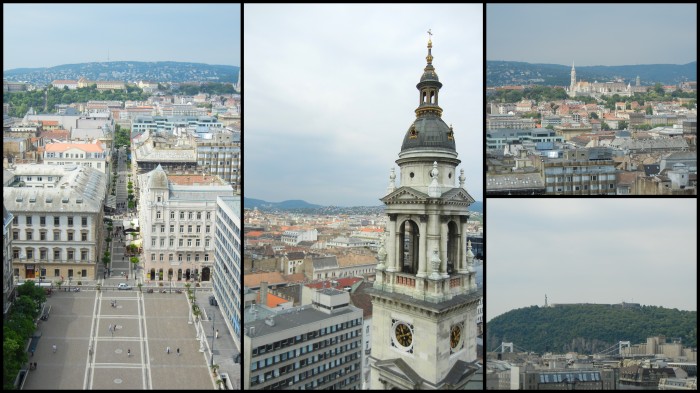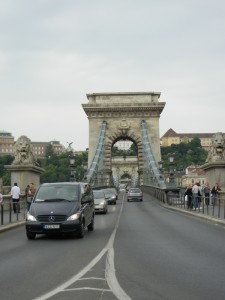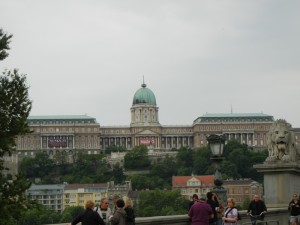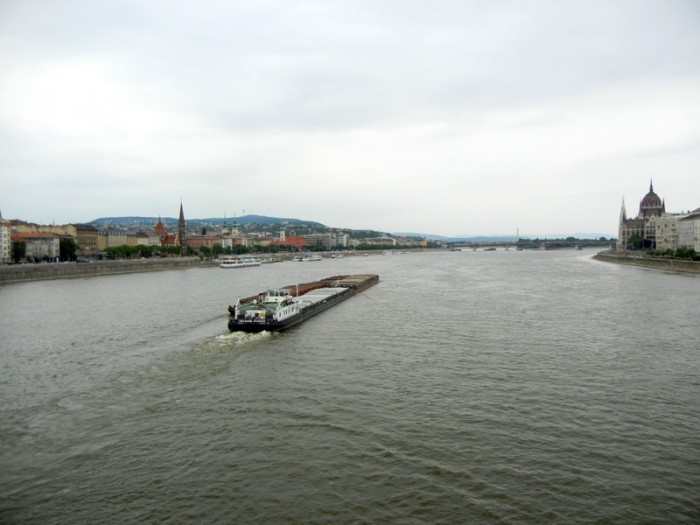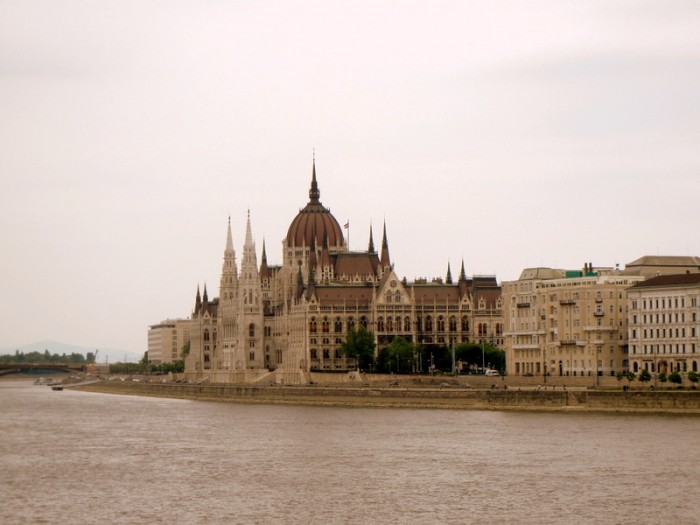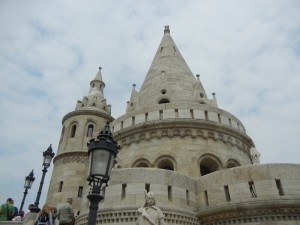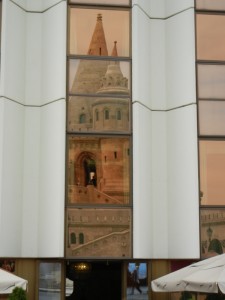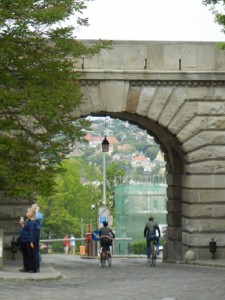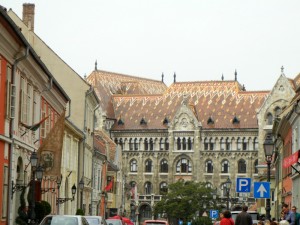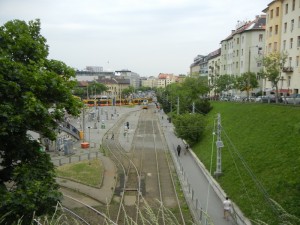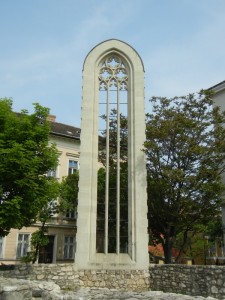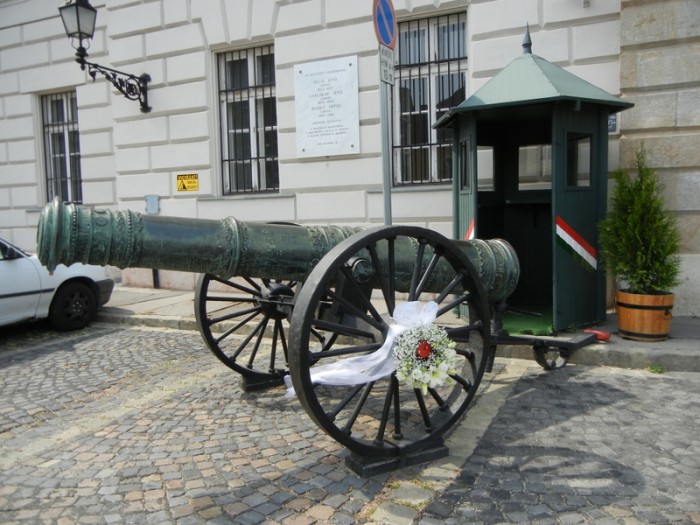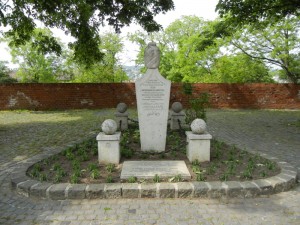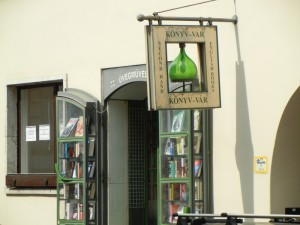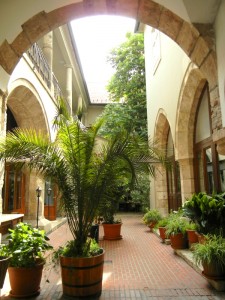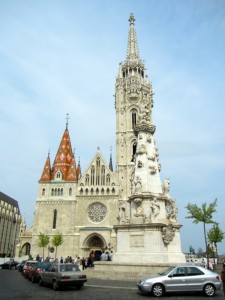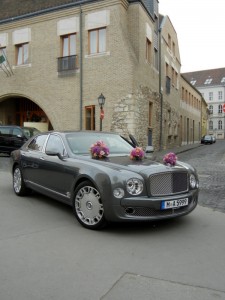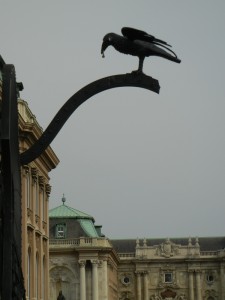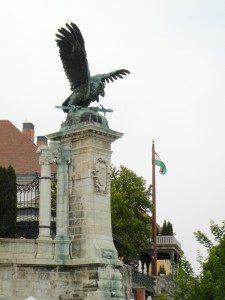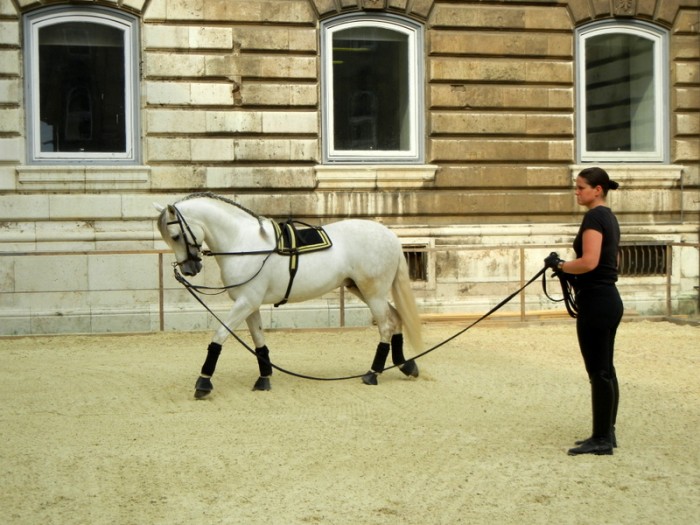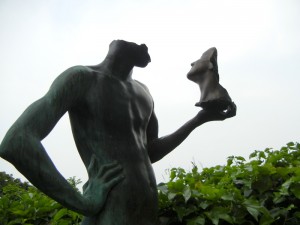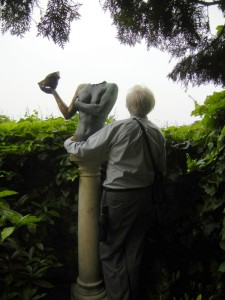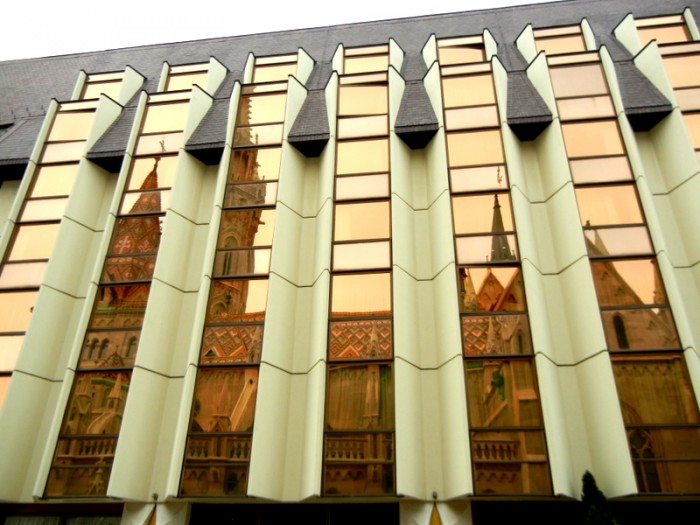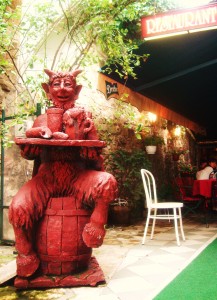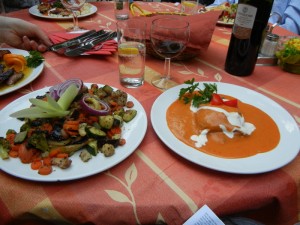When we told our French friends that we were planning a trip to Budapest in mid-May, André asked, “Which are going to, Buda or Pest?” (He is funny in whatever language he uses!) To tell you the truth, I didn’t realize that Budapest was separated like that. I admit it – I am directionally impaired! Give me a city like Missoula where the big directional landmarks are visible and the streets are (mostly) laid out on NSEW grid, and I am fine. Put me in a large city with skyscrapers, and I am a goner. Even though I managed to actually read the map and get us to our first Fulbright meeting in March (earning my husband’s admiration forever) most of the time I have no idea where I am going, geographically speaking. Perhaps it is time for a review of geography, lest I fall into the category mentioned in that question the stumbled on by Miss South Carolina in the 2007 Miss Teen USA contest!
So, we headed East in May from Vienna to Budapest. By train it’s about 2 1/2 hours, through small villages, past fields of flaming yellow rapeseed and enormous wind turbines.
(note – if you want to see any of these photos in greater detail,just click once and then again and they should magnify in a separate screen)
We had previously met up with our friends, Mary and Charles, on the platform at Wien Meidling Bahnhof and when we landed on the platform at the Budapest Keleti station, we were accosted by no less than twenty people offering taxi rides. What to do? We waited until we got towards the front of the old (but very beautiful) station and then got into a taxi. It was, uh, unmarked, which I think is not a good thing, but it didn’t cost four of us too much in the long run to get to our apartment on the Pest side of Budapest. Why, on the map, does it look so much closer?
Budapest is indeed a city divided by a river that runs through it (Yes, I did know that!): The Danau (Danube). Pest is the side with St. Stephen’s Cathedral, the Great Synagogue, the government buildings, Hero’s Square, the big shopping streets and much of the working city. Buda is the hilly side with the old castle/palace, the Matthias Church and plenty of Medieval-Renaissance streets and buildings. Both sides arose from Celtic roots to military frontier fortresses, Buda and Pest before being unified under a series of kings and finally, made part of the Austro-Hungarian Empire, until 1918. And if you don’t know the rest of the story, you can look it up!
We explored both and loved wandering through the ‘big’ attractions (cathedrals, palaces, Fisherman’s Bastion) but just as much through parts of the city where people actually live and work or in out of the way museums. Staying in an apartment on Király utca, not in a ‘tourist’ area, let us see so much more than we would have staying, say, in a Hilton or a Four Seasons. We found a morning family fair complete with a Hungarian version of Raffi, and an art festival with booths that went on for miles! Grocery stores, and bakeries were nearby; learning to work in forints was challenging (think 4 to 6 numeral places-Hungary isn’t totally on the Euro yet, although it is a member of the EU). Reading or speaking in Hungarian (a beautiful sounding language, closer to Estonian or Finnish than any other) was impossible (for us); even knowing how Kodály is pronounced didn’t help!
I am old enough to remember the 1956 Hungarian uprising as well as the more recent transition from communist satellite to Hungary’s present form and I wondered what we would find in this capital city. The answer is great beauty and history (back to the Roman age!) and as well, some parts crying out for restoration and maintenance. just like any major city. Many historic buildings were damaged in WWII or are just feeling their age. Some are being restored; others are left as ‘reminders’. The big avenues are clean and bright but so many of the buildings in the inner city (Pest side) needed re-stucco-ing and painting.
People were friendly and helpful and….. always working! That is one difference between Budapest and, say, Graz, where all stores begin closing on Saturday afternoon and remain closed the next day and on any holiday. In Budapest, stores were open at all hours of the day and night and people were working (this includes city workers!) even on Sunday! We could hear the jackhammers from our apartment! Budapest is definitely a city in transition.
Here are some photos from our trip.
The pastries were just as good as in Austria!
The tune to this song at the Family Reading Fair sounds familiar but I can’t place it! Need translation!
Stephen was Hungary’s first king and is canonized. His ‘right hand’ is revered and encased in the cathedral. We heard an organ concert there the first night we arrived and the next morning, had wonderful views of the city from the top.
The Hilton Hotel is a newer, somewhat controversial building on the Buda side of Budapest. Supermodern in design, it was built right into a 14th-century convent and baroque college. The Fisherman’s Bastion is not old (just looks that way – it was built in 1905!).
Other scenes….
- national archives building on square near Vienna Gate
It seemed to be the height of wedding season, so we really never experienced the INSIDE of Matthias Church.
There must be a lot of straight A’s in Budapest! See below!
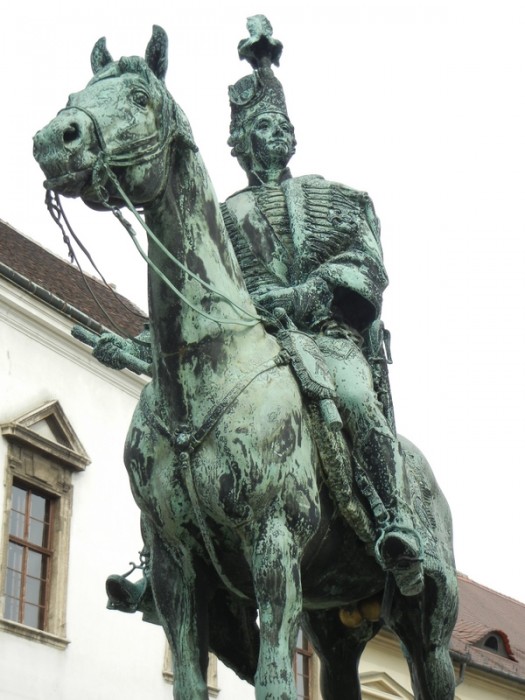
statue of Andras Hadik (field marshal in war with Turks) - students rub horse's testicles for good luck before an exam
Birds are an important symbol for Hungary – crow on the left; eagle on the right.
We found Lipizzaners at the end of our walk on the Buda side! Only 30 € for the show and better seats than we had in Vienna! We didn’t go, but it was tempting!
If nothing else, the Hilton Hotel is great for reflections: this one is Matthias Church.
We finished our second day in Budapest with a lovely and lingering dinner on the Buda side: great wine, good Hungarian food, wonderful company in the garden of the Voros Ordog (Red Devil) Restaurant. Only we weren’t really finished! We still had a boat ride to take!

